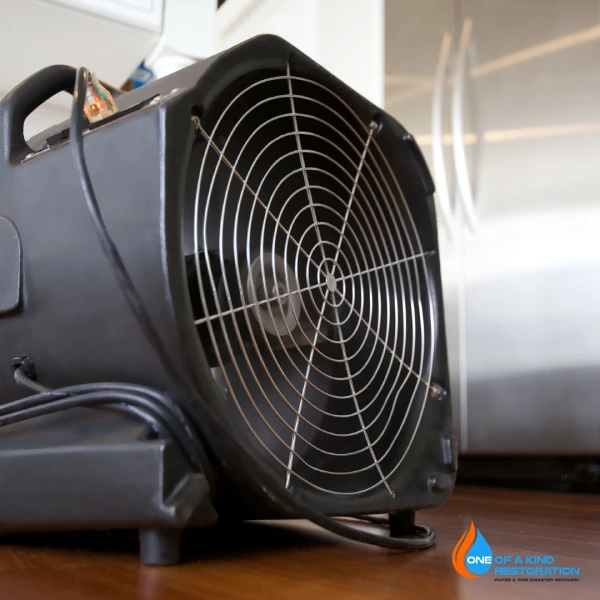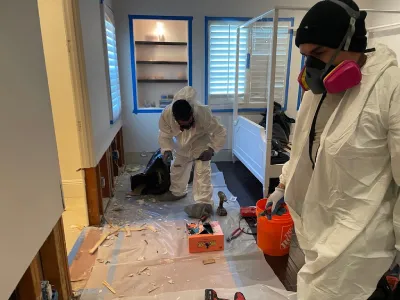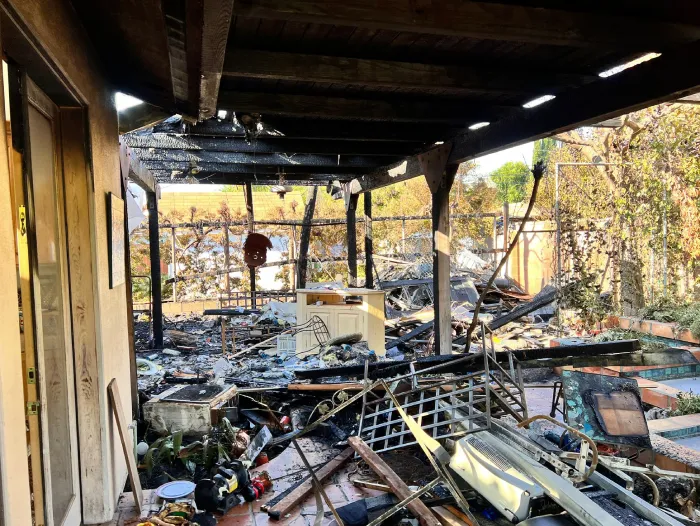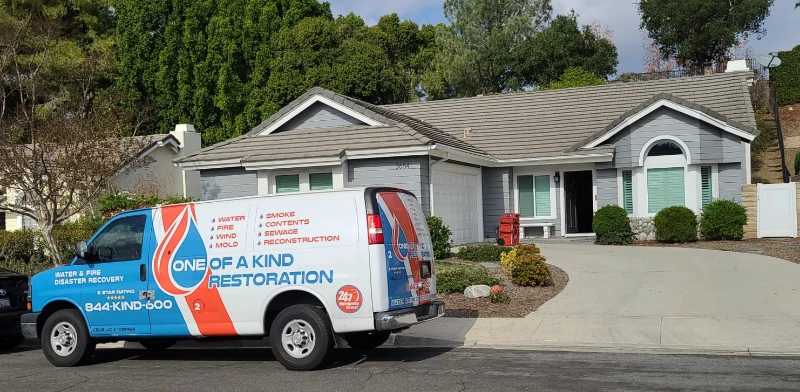Water damage to your hardwood floors is a situation that often calls for professional intervention rather than a DIY approach. Here, we’ll discuss when it becomes necessary to contact a restoration specialist, as opposed to attempting repairs on your own.
Assessing the Extent of Damage
Before diving into the repair process, it’s crucial to assess the extent of the damage. While minor spills or leaks may tempt homeowners to undertake the repairs themselves, there are situations where professional assistance becomes imperative.
Removal: The process of removing damaged boards is delicate and requires expertise. Attempting this without proper tools and experience can lead to further harm to the surrounding boards and the subfloor.
Matching: Selecting replacement boards that seamlessly blend with your existing floor may not be as simple as it sounds. Achieving a cohesive appearance involves considerations like wood species, grain pattern, and finish, which professionals are well-equipped to handle.
Installation: Proper installation techniques are crucial for ensuring that the new boards integrate seamlessly with the rest of your flooring. In cases of significant damage, the complexity of this process often exceeds the capabilities of a typical homeowner.
Finishing: The finishing process, including sanding, staining, and applying protective finishes, requires skill and precision. Professionals have the tools and knowledge to deliver an even, flawless appearance.
It’s important to recognize that patch replacements, while a viable solution for minor damage, are not suitable for more severe cases. When water damage affects a significant portion of your hardwood floor or has compromised the structural integrity, attempting repairs independently may not yield satisfactory results.
In these instances, professional restoration specialists bring their expertise to the table. They possess the necessary skills and equipment to assess, repair, and restore your hardwood floors to their original condition, ensuring a lasting and seamless outcome.
So, when you encounter extensive water damage on your hardwood floors, it’s wise to call in the experts. Professional restoration not only saves you from potential DIY pitfalls but also guarantees the longevity and integrity of your cherished flooring.
Waterlogged Flooring: Understanding the Consequences
Waterlogged flooring represents a more severe and often devastating form of water damage that homeowners may encounter. It typically occurs due to incidents such as flooding, burst pipes, or prolonged exposure to moisture. When hardwood floors are subjected to excessive moisture, they can undergo a range of detrimental changes, resulting in various issues that can significantly impact the integrity and appearance of your flooring. Here are some of the prominent consequences of waterlogged flooring:
Warping
One of the primary issues that waterlogged hardwood floors face is warping. Warping happens when the individual boards of your flooring become distorted, leading them to bend or curve. This distortion is particularly common in engineered hardwood floors. Warped boards not only compromise the aesthetic appeal of your flooring but can also create uneven surfaces that are problematic for walking and furniture placement.
Cupping
Cupping is another common problem associated with waterlogged flooring. It involves the edges of the individual boards curling upward while the center of the board remains lower. Cupping is the result of the uneven absorption of moisture, causing the wood to swell unevenly. This leads to an uneven and rough surface that is both unsightly and uncomfortable to walk on.
Buckling
Buckling is a more severe issue that can arise when your hardwood floors become waterlogged. This occurs when the boards lift away from the subfloor, resulting in a visibly uneven and unstable flooring surface. Not only does buckling compromise the aesthetic appeal of your floors, but it also poses safety concerns, as the uneven surface can create tripping hazards.
Mold and Mildew Growth
Waterlogged floors create the ideal conditions for mold and mildew growth. The excess moisture and the organic material within the wood provide the perfect environment for these harmful microorganisms to thrive. Mold and mildew growth not only exacerbates the damage to your flooring but also poses significant health hazards to those living in the affected space. Allergic reactions, respiratory issues, and other health problems may arise as a result of exposure to mold and mildew.
In some cases, prolonged exposure to high levels of humidity can also lead to waterlogged flooring. This is particularly common in homes that lack proper sealing, allowing moisture to seep into the flooring material over an extended period. Such prolonged exposure can weaken the wood, making it more susceptible to warping, cupping, and other forms of damage.
Given the severity of these consequences, it is essential to take waterlogged flooring seriously. Attempting to address this level of damage on your own can be challenging and may lead to suboptimal results. For significant waterlogged flooring problems, it is highly advisable to seek the expertise of professional restoration specialists. These experts have the knowledge, equipment, and experience needed to assess the extent of the damage and carry out the necessary steps to salvage your flooring while ensuring it is safe, functional, and visually appealing once more.
Challenges of Dealing with Continuous Flooring and Water Damage
Continuous flooring, often found in open-plan spaces or larger rooms, poses distinct challenges when dealing with water damage. Unlike segmented flooring, continuous flooring extends seamlessly throughout a space, which means that addressing damage often involves full replacement rather than patch repairs. Here, we’ll explore the challenges associated with continuous flooring and how insurance companies approach this issue.
Continuous flooring, as the name implies, covers an entire area without visible breaks or transitions between sections. While this design can enhance the visual flow of a space, it complicates the response to water damage incidents. When continuous flooring sustains water damage, such as flooding or severe leaks, addressing the issue requires a comprehensive approach.
The challenges associated with continuous flooring and water damage include:
Full Replacement: Unlike segmented flooring, where damaged sections can be selectively replaced, continuous flooring often requires complete replacement. Partial replacement could result in noticeable differences between the old and new sections, creating visual inconsistencies that are unsightly and diminish the overall appeal of the space.
Insurance Coverage: Recognizing the complexity of dealing with water damage on continuous flooring, insurance companies often have specific policies in place. These policies typically include covering the cost of replacing the entire floor, ensuring that the home is restored to its pre-loss condition.
In such situations, a credible restoration company can be your invaluable partner. They understand the intricacies of continuous flooring and will know how to effectively communicate with your insurance provider regarding the need for full replacement. Their expertise ensures that you not only get your home back to its pre-loss condition but that the results are of the highest quality. The restoration specialists will work diligently to achieve a seamless and aesthetically pleasing floor while maintaining the structural integrity and functionality of the affected area.
It’s important for homeowners to be aware of their insurance policies and to contact their insurance provider promptly in the event of water damage to their continuous flooring. This ensures that the appropriate steps are taken to assess the extent of the damage, plan for a comprehensive replacement, and bring the affected space back to its original state. While dealing with water damage can be challenging, understanding your insurance coverage and working with professionals in the restoration process can help mitigate the impact and restore your home to its former glory.
Why You Should Choose a Local Restoration Company for Hardwood Floor Water Damage
Addressing water damage to hardwood floors is a delicate and complex process that requires professional expertise. Opting for a local restoration company offers several distinct advantages. Here’s why it’s essential to work with the best restoration company in your area:
Experience: Reputable local restoration companies have extensive experience dealing with water-damaged hardwood floors in your specific region. They understand the nuances of different wood species, finishes, and installation methods, enabling them to provide tailored solutions that consider your local climate and conditions.
Advanced Equipment: Top local restoration companies use state-of-the-art equipment, including dehumidifiers and air scrubbers to efficiently dry out the area and clean the air. They employ thermal imaging technology and moisture readers to assess damage and its extent throughout your home.
Professional Assessment: A skilled local restoration team can accurately assess the damage specific to your area and determine the most suitable approach. In the case of patch replacement, they have the knowledge to provide the best possible match to your existing flooring, ensuring a seamless result.
Insurance Claims: Dealing with insurance claims can be a complex process. The best local restoration companies have a dedicated team of experts who can help you navigate the insurance process, ensuring you receive the coverage you deserve.
Quality Results: When it comes to restoring the beauty and functionality of your hardwood floors, the best local restoration company is committed to delivering high-quality results. Flooring installation can be more complex than it appears on the surface, and a professional company will have an experienced team to ensure the job is done properly the first time. They prioritize your satisfaction and work diligently to return your home to its pre-damaged condition while considering the specific challenges of your region.
In conclusion, hardwood floors can be repaired after water damage, but the extent of the damage and the approach to repair vary. For minor damage, patch replacements can be effective. However, severe waterlogged flooring often requires a more comprehensive solution. Continuous flooring, usually covered by insurance, should be fully replaced to maintain a consistent appearance. To ensure the job is done properly the first time, always choose a reputable local restoration company with the experience and expertise to restore your hardwood floors to their former glory while taking into account the specific challenges of your region.







